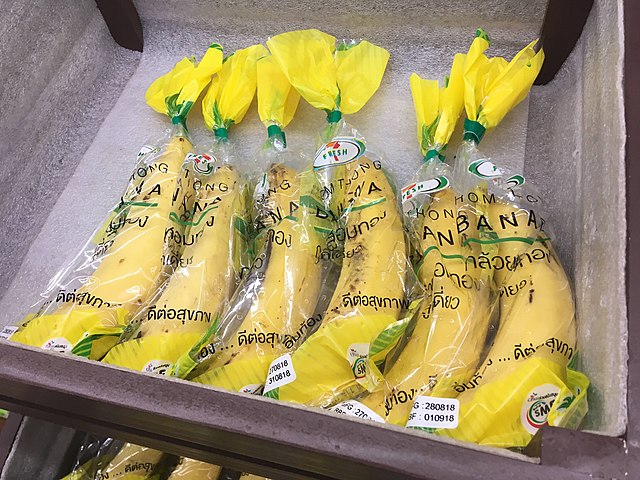Food packaging prevents contamination and extends the shelf-life of food products, making food safe and available to the public. Common food-packaging materials include metals, glass, paper, and plastics. Of these, metals, glass, and recyclable paper are the most sustainable, and plastics are the least. Plastics, however, have become the predominant packaging material for fresh fruit and vegetables, as a result of their light weight and reasonable ability to prevent spoilage. Because plastic waste pollution is a serious environmental problem, researchers are searching for sustainable packaging materials and starting to report on promising alternatives. See also: Food; Food packaging; Plastic waste pollution; Sustainability

One such packaging innovation, developed by researchers at the Swiss Federal Laboratories for Materials Science and Technology (Empa), is a coating consisting of cellulose nanofibers extracted from the waste byproduct of fruit, vegetables, or other plants after the juice has been pressed out. When sprayed on fruit and vegetables, these cellulose nanofibers form an almost invisible protective coating that can be washed off and that is non-toxic if eaten. Spray-coating bananas with this substance prevented browning for up to one week. Presently, Empa is working with a fruit and vegetable supplier to optimize the coating. See also: Cellulose; Nanotechnology; Renewable resource
In another promising packaging improvement, researchers from Nanyang Technological University (NTU) in Singapore and Harvard University in the United States have developed a material that is biodegradable and that releases natural antimicrobial compounds in the presence of high humidity or enzymes produced by bacteria. The NTU packaging material was derived from corn gluten (a waste byproduct of corn used to make ethanol) and natural antimicrobials, including thyme oil, sorbic acid, and nisin—an antibacterial protein (bacteriocin) produced by the bacterium Lactococcus lactis. Strawberries stored in the NTU packaging material stayed mold-free for seven days, while strawberries stored in plastic packaging became moldy in four days. This new material has the potential to reduce both food waste and plastic waste, and could be used for packaging fish, meat, vegetables, and fruit. Presently, the researchers are looking for a manufacturing partner for scale-up and production. See also: Antimicrobial agents; Corn; Food microbiology; Food preservation; Thyme
Obviously, zero packaging, as is often the case at local farmers markets, is the most sustainable means of distributing food. However, most people rely on packaged food from grocery stores. Alternatives to plastic and other non-sustainable food-packaging methods may face challenges, in terms of public acceptance, but could succeed with continued ingenuity from researchers while still meeting or exceeding the high standards set by the food industry. See also: Food science





